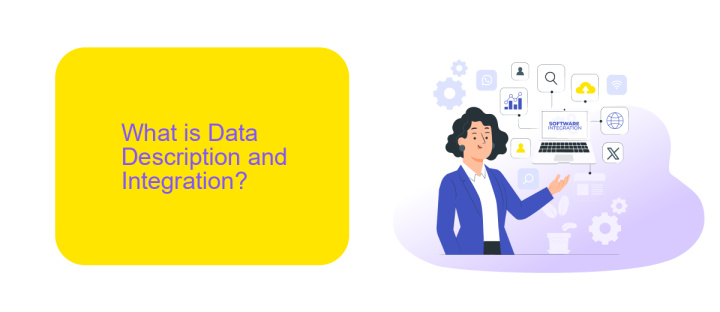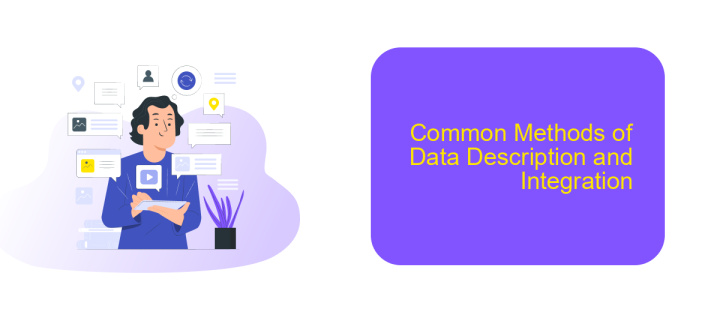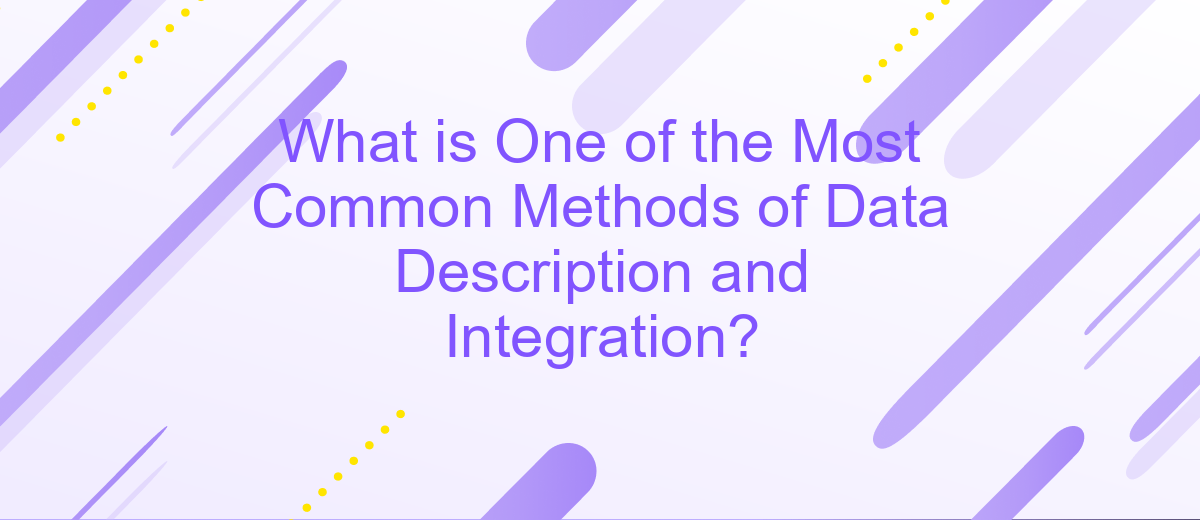What is One of the Most Common Methods of Data Description and Integration?
One of the most common methods of data description and integration is the use of metadata. Metadata provides essential information about data, such as its source, structure, and context, enabling efficient data management and interoperability. By standardizing how data is described and integrated, metadata facilitates seamless data sharing and enhances the overall quality and usability of data across various systems and applications.
Introduction
In the modern digital landscape, data description and integration play pivotal roles in ensuring seamless operations and insightful analytics. One of the most common methods for achieving this is through the use of automated data integration platforms. These platforms facilitate the smooth transfer and consolidation of data from various sources, enabling businesses to make informed decisions and streamline processes.
- Automated data synchronization
- Real-time data updates
- Enhanced data accuracy
- Scalability and flexibility
Among the numerous tools available, ApiX-Drive stands out as a comprehensive solution for data integration. By offering a user-friendly interface and robust features, it empowers organizations to effortlessly connect disparate systems and automate data workflows. This not only saves time and resources but also ensures that data remains consistent and up-to-date across all platforms, driving better business outcomes.
What is Data Description and Integration?

Data description and integration are fundamental processes in the realm of data management. Data description involves the meticulous documentation of data attributes, structures, and formats to ensure a clear understanding and proper utilization. This process often includes metadata creation, which provides detailed information about data sources, types, and relationships. By accurately describing data, organizations can enhance data consistency, improve searchability, and facilitate effective data governance.
Data integration, on the other hand, focuses on combining data from disparate sources into a unified view, making it accessible and useful for analysis and decision-making. This process can be complex, involving the extraction, transformation, and loading (ETL) of data. Tools like ApiX-Drive simplify data integration by offering seamless connections between various applications and services, automating data transfer, and ensuring real-time synchronization. By leveraging such tools, organizations can streamline workflows, reduce manual errors, and achieve a cohesive data environment.
Methods of Data Description and Integration

Data description and integration are crucial for effective data management and utilization. One of the most common methods involves the use of standardized formats and protocols to ensure consistency and compatibility across various data sources.
- Data Warehousing: This method involves collecting and storing data from multiple sources in a centralized repository, making it easier to analyze and report.
- ETL Processes: Extract, Transform, Load (ETL) processes are used to extract data from different sources, transform it into a suitable format, and load it into a target database or data warehouse.
- API Integration: Application Programming Interfaces (APIs) allow different software systems to communicate and share data seamlessly. Services like ApiX-Drive facilitate API integrations, enabling automated data exchange and reducing manual effort.
- Data Mapping: This technique involves creating a schema or blueprint that defines how data from different sources will be combined and transformed to ensure consistency and accuracy.
By employing these methods, organizations can achieve a unified view of their data, enhancing decision-making and operational efficiency. Tools like ApiX-Drive simplify the integration process, allowing businesses to focus on leveraging their data for strategic insights.
Common Methods of Data Description and Integration

Data description and integration are critical components in managing and utilizing data effectively. One of the most common methods of describing data is through metadata, which provides information about the data's structure, origin, and meaning. Metadata helps in understanding the context and usability of data, making it easier to integrate with other data sources.
Data integration involves combining data from different sources to provide a unified view. This process often requires transforming and cleaning the data to ensure consistency and accuracy. Effective data integration can significantly enhance data analysis and decision-making processes.
- ETL (Extract, Transform, Load): This method extracts data from various sources, transforms it into a suitable format, and loads it into a target system.
- Data Warehousing: Centralized repositories store integrated data from multiple sources, allowing for efficient querying and analysis.
- API Integration: APIs enable seamless data exchange between systems, facilitating real-time data integration.
Tools like ApiX-Drive can simplify the process of API integration by providing a user-friendly platform for setting up and managing integrations. ApiX-Drive supports various applications and services, making it easier to automate data flows and ensure data consistency across systems.


Conclusion
In conclusion, one of the most common methods of data description and integration is the use of ETL (Extract, Transform, Load) processes. ETL processes facilitate the extraction of data from various sources, its transformation into a suitable format, and its loading into a centralized data warehouse. This method ensures that data is consistent, reliable, and easily accessible for analysis and decision-making. The effectiveness of ETL processes in managing large volumes of data from disparate sources makes it a preferred choice for many organizations.
Additionally, modern integration tools like ApiX-Drive have simplified the process of connecting different data sources. ApiX-Drive offers a user-friendly interface and a wide range of pre-built connectors, enabling seamless data integration without the need for extensive coding. By automating data flows between various applications and services, ApiX-Drive helps businesses maintain data accuracy and streamline their operations. As a result, leveraging tools like ApiX-Drive can significantly enhance the efficiency and effectiveness of data integration efforts.
FAQ
What is one of the most common methods of data description and integration?
How do APIs facilitate data integration?
What are the benefits of using APIs for data integration?
Can APIs be used to integrate data from multiple sources?
Are there tools that can help with API-based data integration?
Apix-Drive is a simple and efficient system connector that will help you automate routine tasks and optimize business processes. You can save time and money, direct these resources to more important purposes. Test ApiX-Drive and make sure that this tool will relieve your employees and after 5 minutes of settings your business will start working faster.

